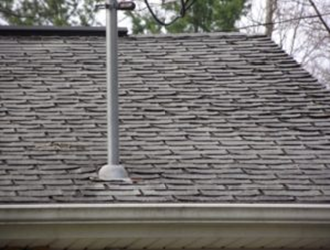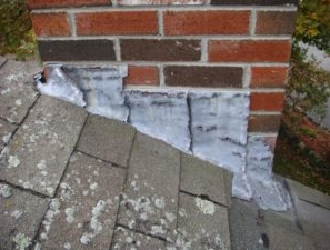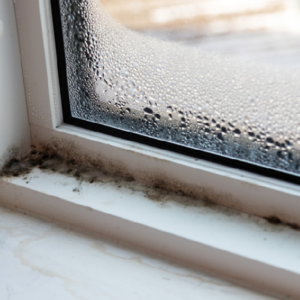It all started with a dark spot right in the middle of the dining room ceiling. Angie noticed it one day, wondered how long it had been there, and made a mental note to have someone come by to check it out. However, being a busy woman, she forgot to make the call to get a roof inspection. Three weeks later, Angie noticed that the dark spot had grown at an alarming rate and had begun to drip. Realizing that this could be indicative of a serious problem, Angie immediately called her local roofing company in Markham for help. She made an appointment within the week, but it was too late; the leak had become so serious that the drywall couldn’t sustain the water. Angie looked on in horror as her ceiling collapsed with a damp thud onto her dining room floor.
This example illustrates the all-to-common problem of identifying when a roof may be in need of replacement before it causes problems in other areas of the house. Sometimes the signs are easy to spot, such as when shingles that have fallen off the roof land on the driveway. However, many times the signs are not so apparent, especially when the roof is not easily viewed from the ground. If you have never been involved in having a new roof installed, you may not know how to spot the signs of a deteriorating roof.
Every homeowner accepts that, sooner or later, they will have to have their roof replaced. The following are some signs to look out for so that you’ll know to have your roof fixed before you find your ceiling caved in.
The Easiest to Spot: Damaged or Missing Shingles and Sagging Roof Sheathing

Missing shingles are one of the most obvious signs that your roof might be in need of repair. While one or two may simply be due to heavy wind or animal damage, a larger bare patch on your roof is usually a sure sign that the entire roof may need replacing. More common than shingles falling off altogether is the curling, chipping, and crumbling of shingles. Often seen first on sections that are more exposed to the sun, worn shingles are no longer properly protecting your home from the elements and should be replaced as soon as possible.
If moisture is able to make it through the shingles and the vapor barrier, it can affect the plywood sheathing underneath, causing sagging. This sagging is both symptomatic, in that it acts as a warning sign that your roof is failing, and causal because it can warp the shingles and flashings, breaking the seals that keep water out of your home.
Damaged Flashing and Vents: The Most Common Source of Water Damage

One of the most common sources of leaks and also one of the hardest to spot, damaged flashings and roof vents can lead to a host of problems. This is because flashings protect all of the areas where water tends to run and collect, such as valleys and chimneys.
While flashings can break, crumble, and come completely detached due to the wear and tear associated with an aging roof, it is often the case that the caulking sealing them to your roof is no longer performing adequately. This can usually be fixed by resealing the flashing with new caulking. If no other signs of an aging roof are present, but you are still experiencing water damage, there’s a very good chance that the culprit is the old caulking on your flashings and vents.
How Long Until Your Warranty Expires?
Once shingles reach a certain age they can begin to deteriorate rapidly. Therefore, it is important to know how long your shingles are warrantied for. Even if your roof looks to be in relatively good shape, it is important to know how long your shingles are warranted for so that you can anticipate having a new roof installed.
Typically, you want to have a look at your roof 10-15 years before the warranty expires. While it is likely still in good shape, some shingles can begin to start to show wear and tear at this point. If you follow these guidelines, you should be able to get your roof replaced before you incur any significant damage to your home. To start replacing your roof, call your local experts today.




